Chinese Destination Wedding Dates 2025
- February 22, 2024
- Chinese
China is one of the richest lands in terms of beauty, wealth, modernity, aesthetics, and culture. People travel to China… Read More
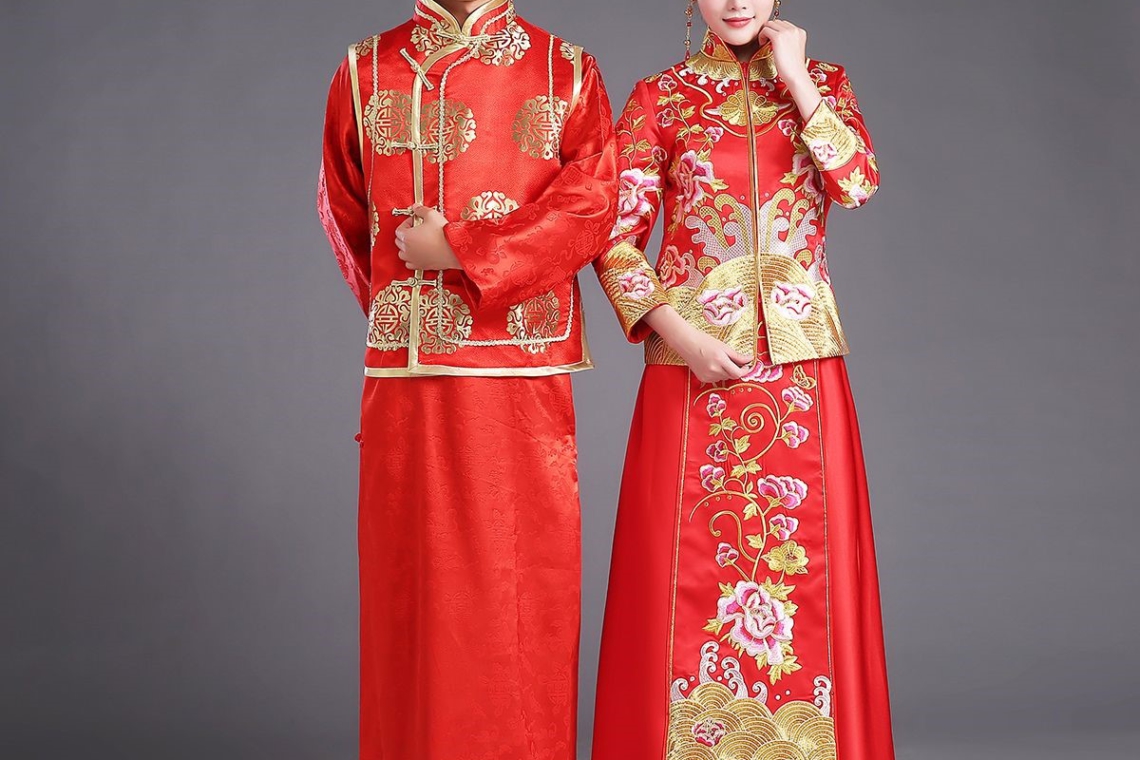
Every Chinese Wedding Rituals and every community stands out from each other because of their special essence. In the world of modernism and integration of subtly accepted traditions, Chinese weddings still endure their rich traditions as an attestation of their timeless tapestry of heritage. The Chinese wedding ceremony transcends so much more than just a mere traditional affair; it celebrates the devotion and dedication of the couple and the families. This joyous celebration is full of vibrance, colours and abundance.
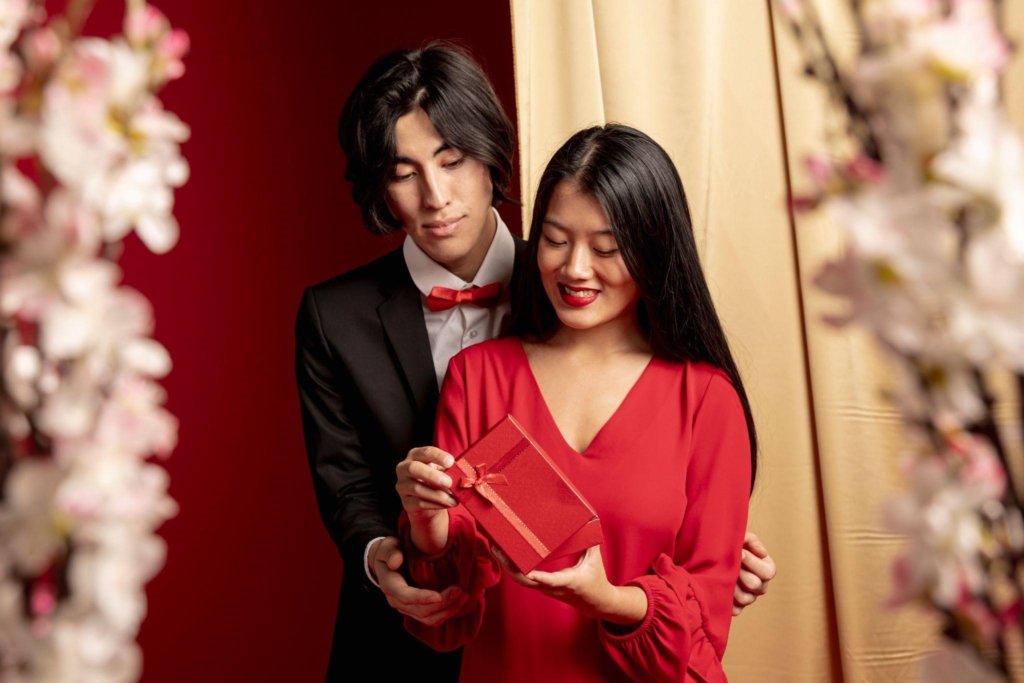
The beauty of Chinese wedding ceremonies lies in consolidating withheld traditions and age-old customs that bridge the gap between generations and reflect values and beliefs. Chinese wedding ceremonies have a concept of six etiquettes or Lui Li, which includes proposing, birthday matching, betrothal gifts, wedding gifts, wedding ceremonies, and the bride’s arrival at the new home.
So, let’s explore this whimsical journey of Chinese wedding traditions individually. The six etiquettes and their division:
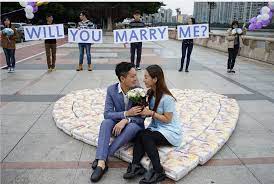
Proposing, or Nankang, is the initial stage of the tapestry. It traditionally involves the groom sending gifts as a marriage proposal via a communicator. These gifts symbolise the groom’s dedication, commitment, and goodwill towards the bride. Once the gifts are acknowledged further by the bride’s family, further etiquette begins.
It is believed that there is an exchange of gifts to acknowledge the groom’s dedication and commitment towards the bride.
Each etiquette has its own gist, which makes it part of the traditions. These customs are the purest way to send a subtle message to both bride and groom. Proposing symbolises mutual respect and consent in the relationship.
Check this also Kashmiri Rituals Muslim Wedding
Chinese traditions are full of astrological beliefs, which remain today through a legacy that has been passed down from generation to generation and maintained courteously.
This is the second aspect of the six etiquettes involving matching birthdates to check the compatibility of the couple for a better and more balanced life.
This process is often done by people with spiritual knowledge, such as a fortune teller or a Chinese monk. It is based on Chinese astrology, Yin and Yang.
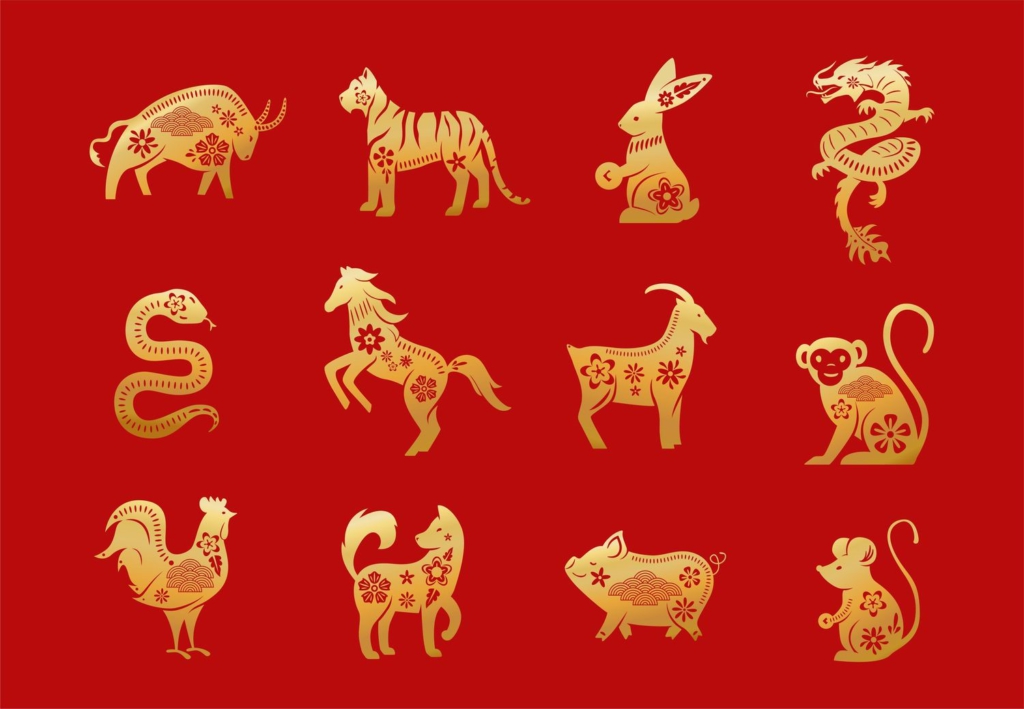
The gifts are often gold jewellery, dragons, mandarin ducks, and others that exemplify fortune, benevolence, love, and kindness toward each other.
Presenting gifts in the presence of guests represents the mutual acceptance of the families of the bride and groom.
Check this also Kashmiri Rituals Hindu Pandit Weddings
Wedding rituals are the most intricate and intimate part of Chinese traditions. The wedding ceremony consists of various rituals resonating and reflecting Chinese culture, which are preserved to date.
Cai Tou carries a very deep and lovely significance. This ceremony takes place at the bride’s and groom’s home individually in the presence of their respective families, wherein their hair is brushed one day prior to the wedding ceremony. It is believed that this ceremony signifies the couple’s individual transition to adulthood, and brushing the hair signifies the removal of impurity and the beginning of a new and happy life.
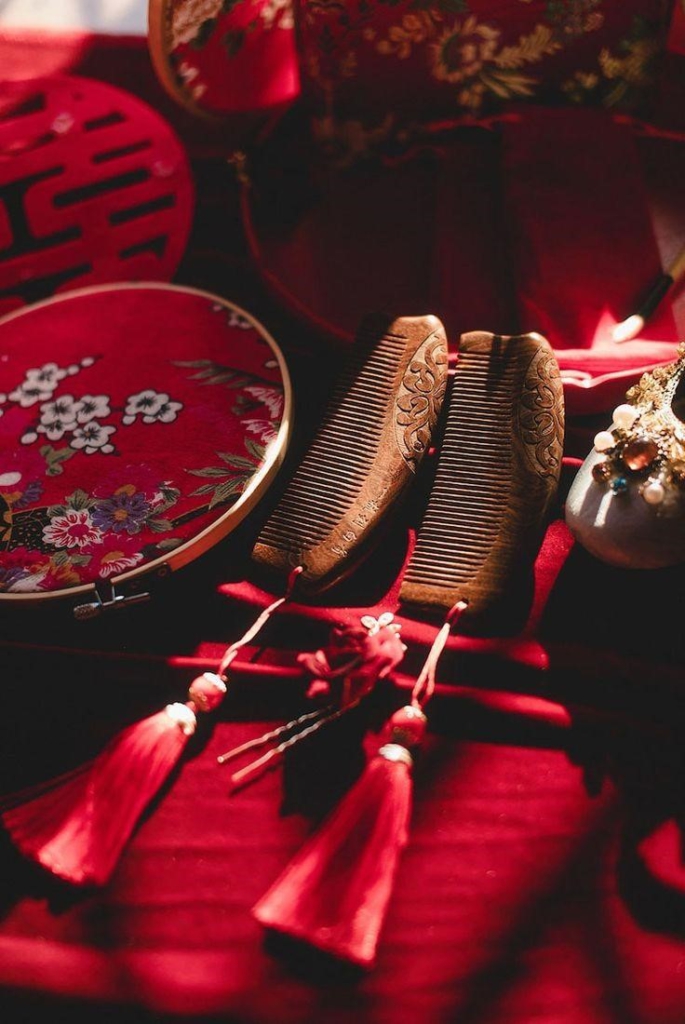
Check this also Wedding rituals in Bihar
This is the main aspect of all six, this includes exchange of gifts as a crest of love, mutual respect and reciprocation. The selection of the betrothal gifts is done with great care and attention as each of it has its own significance.
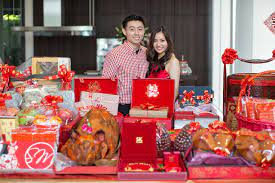
It is believed that the gifts are the representation of love, warmth and acceptance within the families, besides they also show fortune and happiness.
Betrothal gifts are all about gold jewellery, bracelets, dragons, fruits, sweets and other delicacies.
Every ritual signifies something, An Chuang or preparing the bridal bed involves preparing the bed with auspicious colours like red. The pillow is filled with lotus seeds and dates for fertility. Other items signifying the happy marital status are also a part of An Chuang.
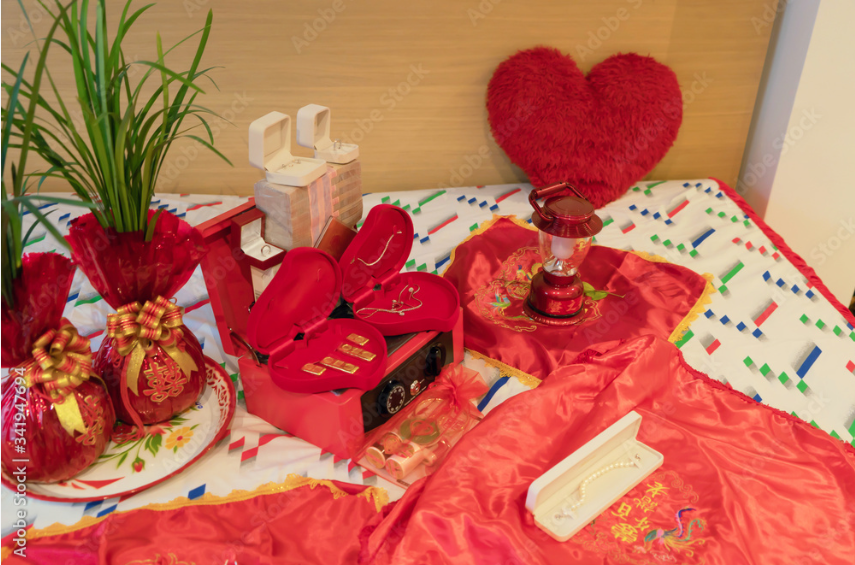
This is the final stage of the ceremony. The bride dresses up in the traditional Chinese wedding dress, the qipao. It is a vivacious affair, and people dance and celebrate.
They burst firecrackers and dance the traditional lion troupe. The traditional dress is often red and golden in colours as Chinese traditions speak of auspicious colours and everything in the wedding is based on the same for a better life, happy life and good luck.
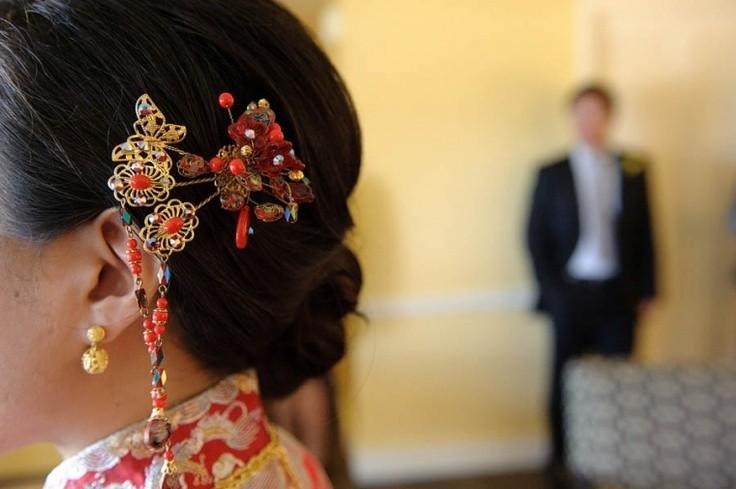
Check this also Bengali Wedding Rituals
The groomsman, or Xiongdi, accompanies Na Jia. This is also a very playful wedding stage, putting the groom to the test through games. Traditionally, the bridesmaids designed these games to test the groom’s dedication. One popular game is the Chaugmen or the door game.
After fulfilling the challenge, the groom can enter the bride’s room, find her shoe, and put it on her foot.
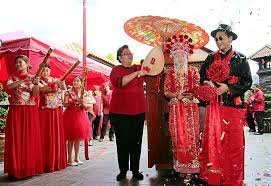
Na Jia represents the groom’s dedication and commitment to the bride. He will find his way to choose her in every difficult situation in life. Isn’t it beautiful?
Check this also Budhist Wedding Rituals
The tea ceremony is essentially the heritage of Chinese weddings, where the couple serves tea to the family’s elders, expressing gratitude and appreciation for them.
The tea is believed to be served in a red tea set with a double happiness symbol, as they are the epitome of fortune and good luck.
Chinese weddings are all about pious things and good luck.
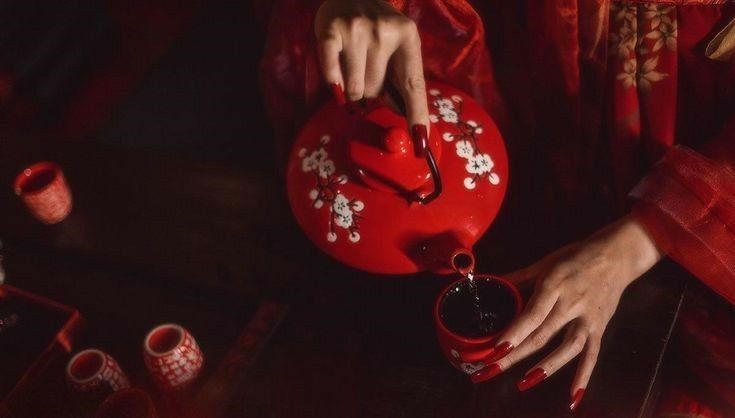
This ritual speaks of the love and beauty of promise and commitment. The couple stands in the presence of the guests, family, and God to promise and vow to each other a lifetime of love, respect, and mutual support, and a testament to it by exchanging rings.
This is one of its kind moments in anyone’s life.
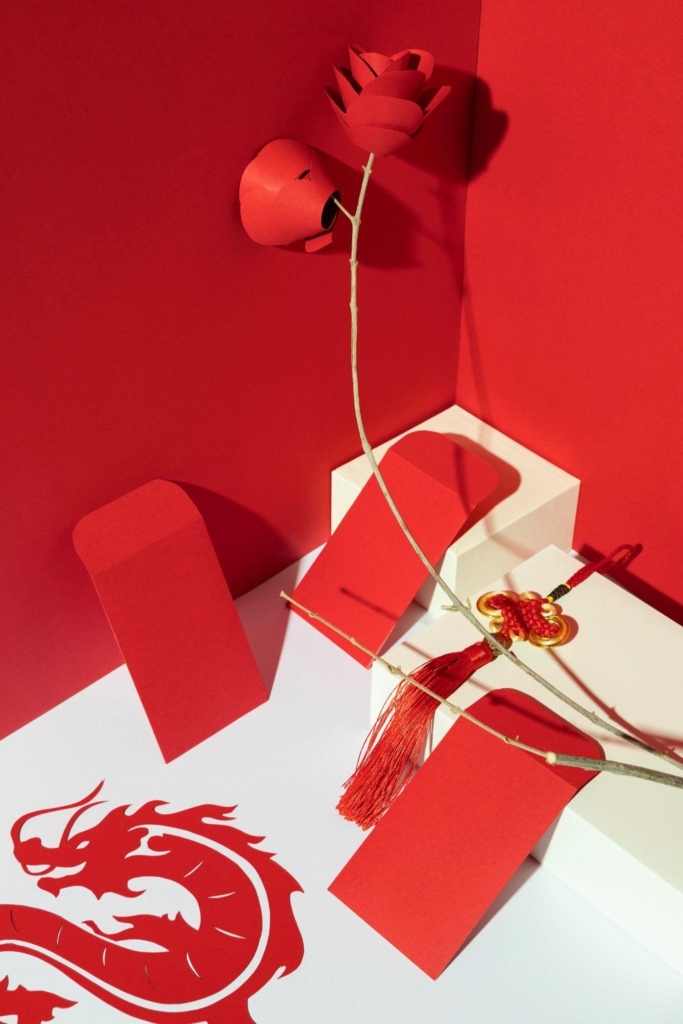
The aspect occurs at the wedding ceremony, displaying the importance of generosity and mutual respect within the family. This includes a groom’s family presenting gifts to the bride’s family and vice versa.
The wedding Banquet is an opulent affair where everyone, kith and kin, is involved and celebrates the couple’s union.
Traditional Chinese delicacies are served, and everyone wishes the new couple warmth and happiness.
To name a few traditional Chinese wedding delicacies include:
Noodles and rice, scallops, Fish, Abalone and sea cucumber, Roast pig, Shark fin soup, Roast duck, Lobster and chicken. These are some celebrated Chinese delicacies that are often seen on the table of a Chinese wedding.
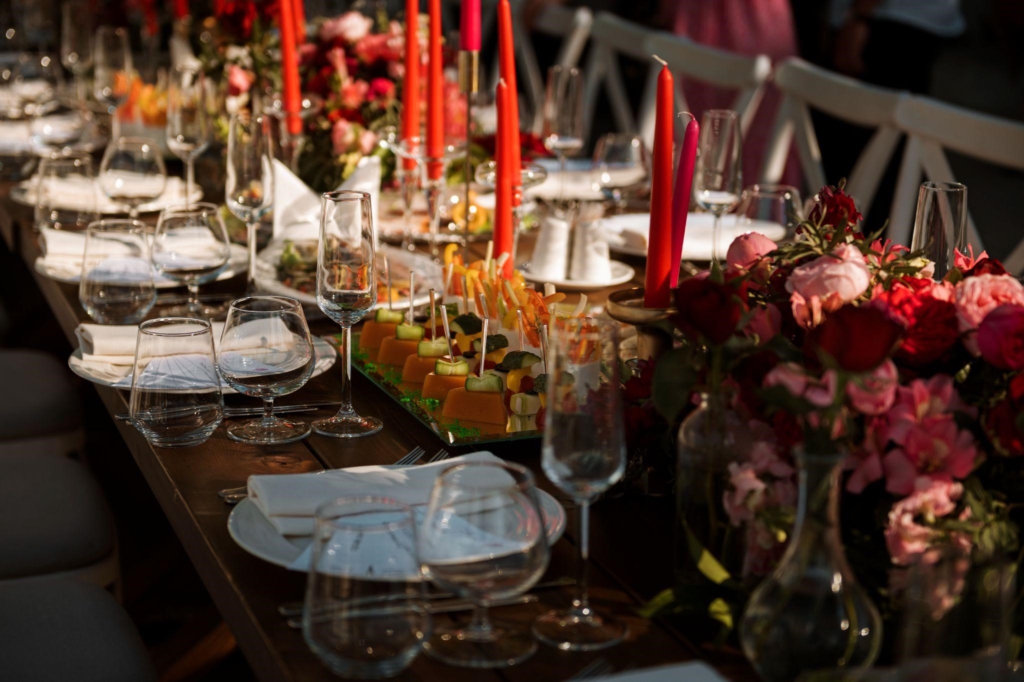
Besides all these, other aspects play a crucial role in the Chinese wedding ceremony. Let’s examine them.
Check this also Nepali Wedding Rituals
Different sources speak differently about the wedding date selection. The wedding date in Chinese weddings is finalised based on their spiritual beliefs.
Some believe it is based on the zodiac sign and birth preferences, which are evaluated by a Chinese monk or fortune teller and then finalised.
While others believe that it is derived from the lunar calendar. Traditionally, they prefer dates to coincide with traditional festivals like the Spring and Double Seventh Festivals.
These dates are believed to bring peace, prosperity and harmony to the couple.
Also, read about Chinese Wedding Dates 2024.
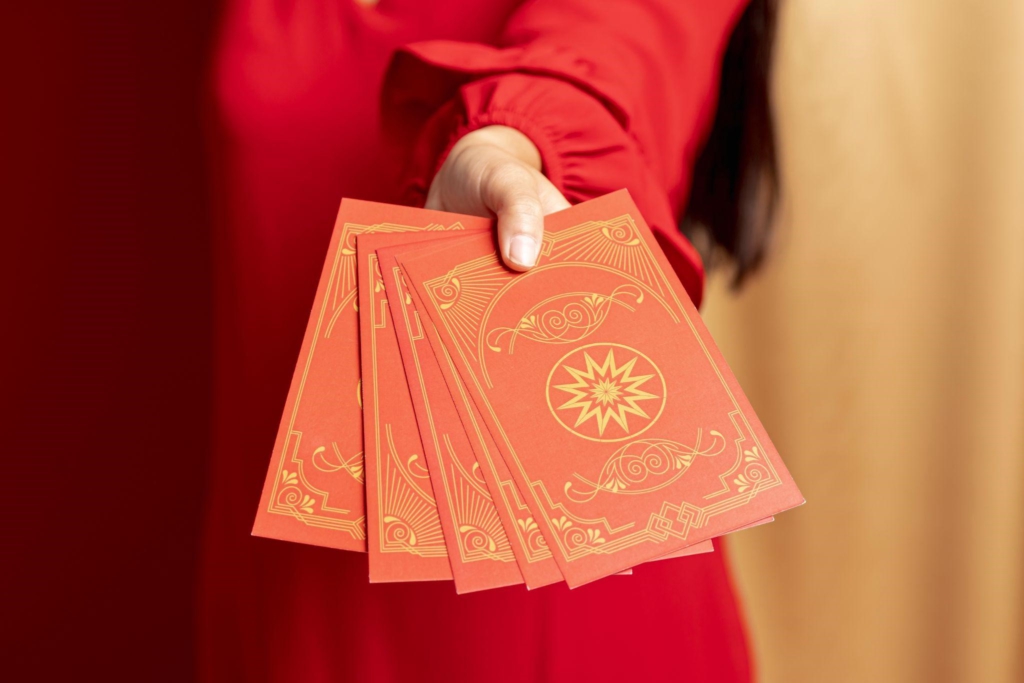
The bride often chooses to wear a traditional red one-piece called qipao. The dress has an embroidered Phoenix made of gold and silver threads, which are considered auspicious. The groom wears a tang suit with a jacket; this jacket is adorned with dragon symbols as they are considered pious.
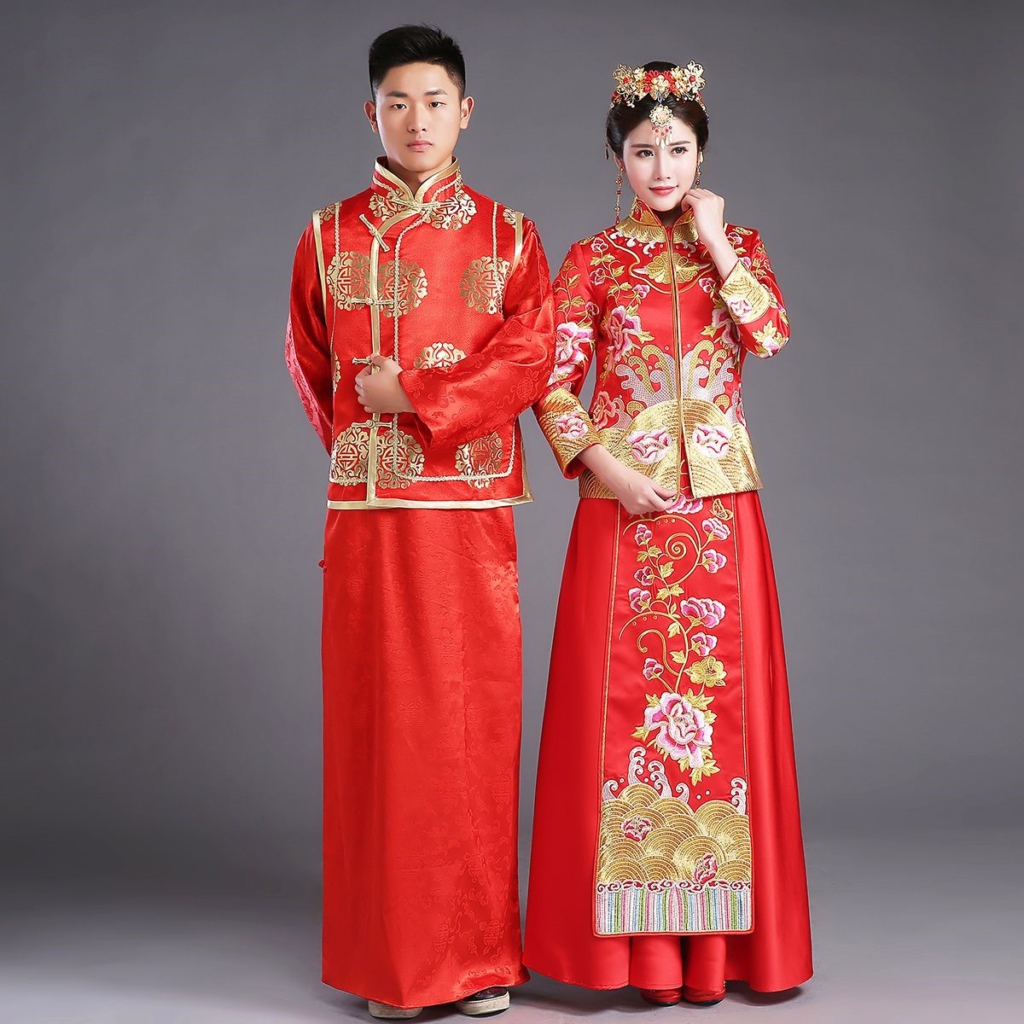
The Double Happiness Symbol is of distinct importance in Chinese weddings. It translates to happiness and is considered a highly pious and essential part.
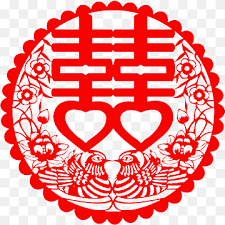
No wedding is complete without this symbol, which is used on envelopes, decorations, cake toppings, and even the cups used in the tea ceremony.
Check this also Pagan Wedding Rituals
Red and golden are the most auspicious colours in Chinese weddings. They say red represents love, loyalty and fertility, while golden represents wealth and fortune.
The wedding bed, bride’s dress, and cup set in the tea ceremony are all red, representing fortune.
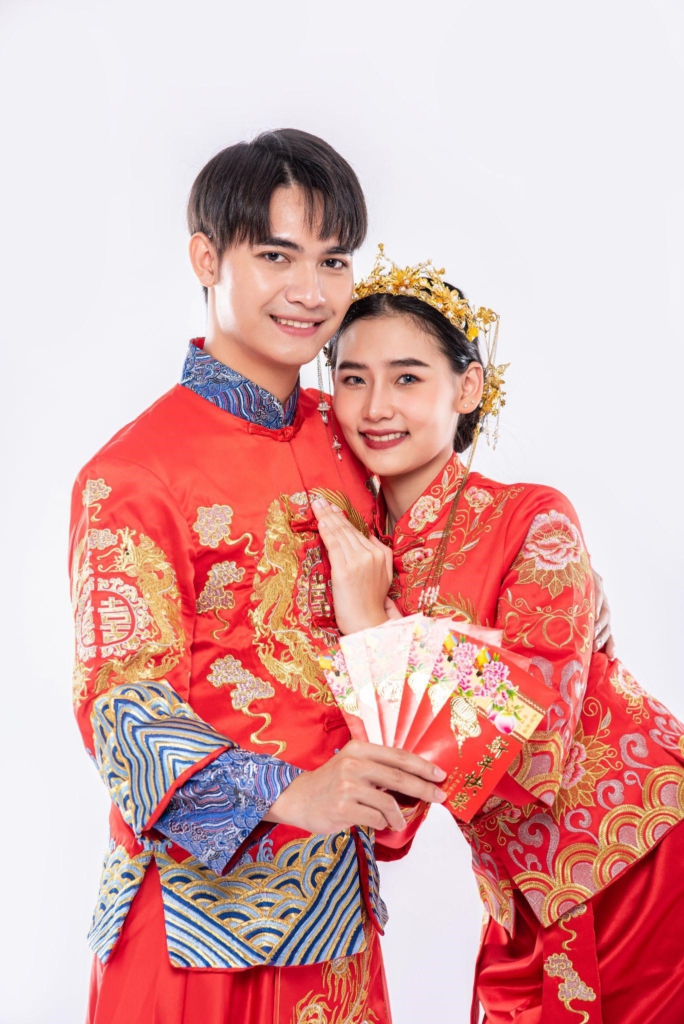
Chinese weddings are bland without songs and celebrations, and weddings are the celebration of love and unison. This culturally rich community that carries the legacy of timeless folks plays songs and dances to its tunes while celebrating the couple and their married life.
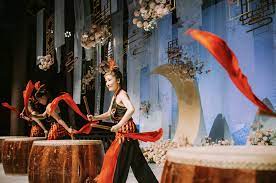
Read about famous Chinese Wedding Songs.
Chinese weddings are full of ancient traditions and beliefs. They involve everything related to fortune and goodwill, from the colour selection to the date finalisation.
Chinese communities have proudly and gracefully preserved their rich heritage and have justifiably enjoyed it.
Check this also Mormon Wedding Rituals and Indian Wedding Rituals.